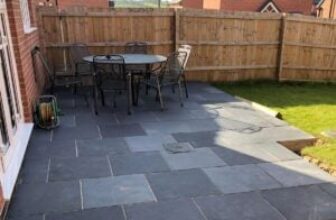
When it comes to flooring, carpet padding is often an overlooked component, yet it plays a critical role in enhancing comfort, prolonging the life of your carpet, and improving overall home aesthetics. This article will explore the essential aspects of carpet padding, helping you make informed decisions for your flooring needs. Here’s what you need to know.
What is Carpet Padding?
Carpet padding, also known as carpet underlay, is a layer of cushioning that is installed beneath your carpet. It serves several key functions:
- Comfort: Padding provides a soft, cushioned feel underfoot, making walking on your carpet more enjoyable.
- Insulation: It helps to insulate the floor, keeping your home warmer in winter and cooler in summer.
- Noise Reduction: A good padding can significantly reduce noise levels in your home by absorbing sound.
- Carpet Longevity: Quality padding protects the carpet fibers from wear and tear, extending the life of your carpet.
Types of Carpet Padding
Understanding the various types of carpet padding is crucial for selecting the right one for your home. Here are the most common types:
- Foam Padding:
- Made from expanded polyurethane foam.
- Offers good comfort and is available in various thicknesses.
- Generally affordable and lightweight.
- Rubber Padding:
- Made from natural or synthetic rubber.
- Provides excellent durability and resilience.
- Ideal for high-traffic areas due to its sturdiness.
- Fiber Padding:
- Made from recycled materials like felt or jute.
- Offers a more eco-friendly option.
- Provides good insulation and sound absorption.
- Combination Padding:
- Made from a mix of materials.
- Aims to combine the best features of different types of padding.
- Offers versatility in terms of comfort and durability.
Factors to Consider When Choosing Carpet Padding
When selecting carpet padding, consider the following factors to ensure you make the best choice for your needs:
- Room Type: Different rooms have different requirements. High-traffic areas, like hallways and living rooms, may need denser padding, while bedrooms can benefit from softer options.
- Carpet Type: The type of carpet you choose will affect your padding choice. Thicker carpets often require thicker padding to provide adequate support.
- Thickness: Padding thickness generally ranges from ¼ inch to 1 inch. Thicker padding can provide more comfort but may also reduce carpet stability.
- Density: The density of padding is measured in pounds per cubic foot. Higher density typically means better support and durability.
Benefits of Quality Carpet Padding
Investing in quality carpet padding can yield several advantages:
- Enhanced Comfort: A well-chosen padding provides a soft feel underfoot, making your space more inviting.
- Improved Sound Insulation: Quality padding absorbs noise, creating a quieter environment—ideal for homes with kids or pets.
- Prolonged Carpet Life: Good padding can help prevent the carpet from crushing and extending its lifespan.
- Energy Efficiency: Insulating properties of padding can help with temperature regulation, potentially lowering heating and cooling costs.
How to Install Carpet Padding
Installing carpet padding is a crucial step in the carpet installation process. Here’s a simplified overview:
- Prepare the Floor: Ensure the subfloor is clean and dry before installation.
- Measure and Cut: Measure the room and cut the padding to fit, leaving a small gap at the edges to prevent moisture issues.
- Lay the Padding: Place the padding down, ensuring it lies flat without wrinkles.
- Secure the Padding: Use adhesive or tape to secure the padding, especially in high-traffic areas.
- Install Carpet: Once the padding is in place, you can proceed with installing the carpet on top.
Maintenance of Carpet Padding
Proper maintenance of carpet padding is essential to ensure its longevity. Consider these tips:
- Regular Cleaning: Vacuum the carpet regularly to remove dirt and debris that can accumulate in the padding.
- Check for Moisture: Periodically check for signs of moisture or mold, especially in damp areas like basements.
- Replace When Necessary: If you notice any significant wear, odor, or damage, consider replacing the padding.
Conclusion
Choosing the right carpet padding is vital for ensuring comfort, durability, and aesthetic appeal in your home. By understanding the types, factors to consider, and maintenance tips, you can make informed decisions that enhance your living space. For more detailed information on flooring options, visit Flooring World.
Investing in quality carpet padding is an investment in your home’s comfort and longevity. Whether you’re upgrading an existing carpet or installing a new one, don’t overlook this essential element. For further guidance and quality products, explore the offerings at Flooring World, where you’ll find a variety of options to suit your needs.
By understanding these key aspects of carpet padding, you can create a cozy and inviting atmosphere in your home, ensuring that your floors feel as good as they look. Remember, the right padding can make all the difference in your overall flooring experience, so take the time to choose wisely and enjoy the benefits for years to come. For more insights, check out Flooring World, your trusted source for all flooring needs.







